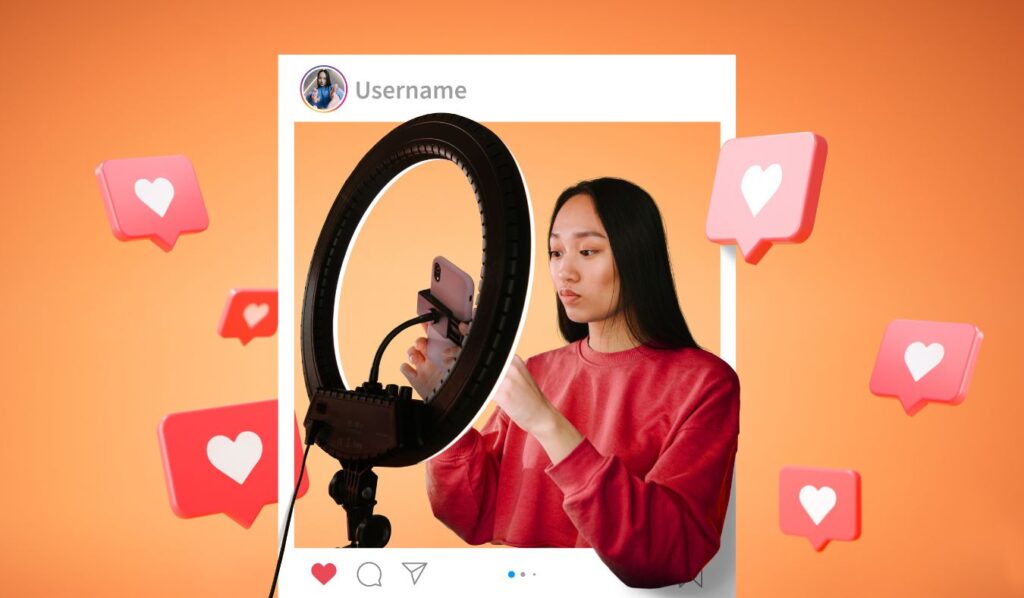If you’re running a startup or small business, social media likely feels like another thing on your never-ending to-do list. You know it’s important, but limited time, tight budgets, and maybe not having a dedicated social media guru on staff make it all seem overwhelming.
Let’s be honest: there’s no single magic social media platform that’s going to instantly transform your business. The “best” choice for you depends on several factors:
- Who are your ideal customers?: Meeting them where they already hang out online is key.
- What are your goals?: Brand awareness, sales, lead gen… each might favor a different platform.
- What kind of content do you enjoy creating? Success is far more likely if you play to your strengths.
This guide won’t promise overnight viral fame, but it WILL empower you to make smart, strategic choices about where to focus your social media efforts. Think of it as maximizing your return on the time and energy you do invest!
Platform Considerations for Small Biz
Choosing the right social media platforms can make or break your efforts. Here are the key factors to keep in mind as a startup or small business:
Ease of Use
- Intuitive is Ideal: You need a platform where creating posts and understanding analytics doesn’t require a tech degree.
- In-App Tools: Can you design simple graphics, edit videos, etc., right within the platform, or will you need expensive external software?
- Learning Curve: If a platform has tons of amazing features, but takes months to master, it might not be the best fit when you’re juggling multiple roles.
Cost
- The Power of Free: Most platforms offer a solid base level of features to get you started at no cost.
- Targeted Ads: Even small ad budgets can be effective if you understand how to pinpoint your ideal audience.
- Paid Tiers = Prove the Value: Before upgrading, be sure the added features directly correlate to results (increased leads, sales, etc.).
Audience Match
- Don’t Guess, Research: Use your existing website analytics, customer surveys, and simply observing online conversations within your niche to determine where your ideal customers hang out.
- Age Matters: Younger audiences skew towards platforms like Instagram and TikTok, with older demographics still favoring Facebook.
Content Type Fit
- Work Smarter, Not Harder: If you despise being on camera, chasing viral video trends on TikTok is a recipe for burnout.
- Existing Content: Do you have blogs that can be repurposed into social posts? This might make text-heavy platforms a good fit.
- Skill Building: If you’re drawn to a platform, but lack the current skill (say, video editing), are you willing to invest time in learning?
Organic Reach Potential
- The Harsh Reality: Most platforms now favor paid content to some degree. It’s harder to achieve massive reach without ad spend.
- Exceptions Exist: Niche communities on Twitter, Pinterest, etc., can still reward great content organically.
- Play the Long Game: Even on paid-heavy platforms, consistent, high-quality content builds trust over time, making your ad dollars go further later.
Platform Breakdowns
With a plethora of social media channels to choose from here is a break down of the most popular and profitable social media platforms.
1. Facebook
Largest social media platform by overall user base, offering the potential for wide reach. Focused on social connections, groups, and sharing a variety of content formats (text, images, video, live streams).
Demographics
- Broad range of ages, but skews older than platforms like Instagram or TikTok.
- Still strong for reaching audiences 30+.
Recommended for
- Businesses with a local focus (targeting by location is strong)
- Brands where community building is key (Facebook Groups can be valuable)
- Customer service-focused companies (many people use it for messaging businesses)
Pros
- Sheer numbers – potential to reach a massive audience IF they are actively engaged.
- Diverse content formats supported.
- Strong ad targeting options, especially for local businesses.
Cons
- Organic reach is tough for business pages without exceptional content or paid promotion.
- Younger audiences are less active on the platform.
- Can be a time-sink if not used strategically.
2. Instagram
Visual-first platform emphasizing photos, videos (especially short-form Reels), and visually appealing Stories. Strong shopping features for e-commerce businesses. Known for its influencer culture and focus on aesthetics.
Demographics
- Skews younger, with the majority of users under 35.
- Largely female, though male usership is growing.
Recommended for
- Businesses with visually appealing products or services.
- E-commerce brands that can leverage shoppable posts and influencer partnerships.
- Lifestyle, beauty, fashion, food, and travel focused brands.
- Businesses who can consistently create high-quality visuals or video content.
Pros
- High engagement potential, especially with Reels.
- Streamlined path to purchase with shoppable features.
- Large potential audience if your target customer is active on the platform.
Cons
- Very saturated, requiring strong visuals and/or unique niche to stand out.
- Algorithm can be fickle, making organic reach challenging
- Requires consistent content creation, especially keeping up with trends.
3. Twitter
Fast-paced, conversational platform focused on real-time text-based updates, news, and discussions. Ability to easily share images, videos, and links, with short character limits for text posts. Known for trending topics, memes, and direct interaction with brands/thought leaders.
Demographics
- Skews slightly male, with core users in the 25-35 age range.
- Attracts professionals, journalists, and those interested in current events/niche communities.
Recommended for
- Thought leaders and brands with a strong, witty voice.
- B2B companies seeking to connect directly with clients.
- News-focused businesses or those who can capitalize on trends quickly.
- Customer service-oriented brands (public responses build trust).
Pros
- Potential for content to go viral if it resonates.
- Direct engagement with customers and industry peers.
- Great for staying on top of industry news and trends.
Cons
- Requires consistent posting to stay visible in the fast-moving feed.
- Can be a breeding ground for negativity/trolls.
- Less focused on lead gen than some other platforms.
4. LinkedIn
Professional networking platform focused on career development, industry news, and business connections. Content emphasis on thought leadership articles, job postings, company updates, and text-based insights.
Demographics
- Attracts working professionals across various industries, often in decision-making positions.
- Skews slightly older than other social platforms.
Recommended for
- B2B companies seeking leads and to establish industry authority.
- Service providers targeting other businesses.
- Recruiters and job seekers.
- Content creators sharing business-focused insights.
Pros
- Direct access to potential clients and decision-makers.
- Great for building thought leadership and credibility within your industry.
- Strong targeting options for B2B advertising.
Cons
- Less emphasis on visuals compared to other platforms.
- Organic reach can be limited if you’re not actively networking.
- Content needs to be professional and value-driven.
5. Pinterest
Visual search engine where users discover inspiration, solutions, and products through “Pins” (images or videos linking to websites). Focus on DIY, home decor, recipes, fashion, and visually-driven content. Long content lifespan means Pins can drive traffic for years.
Demographics
- Heavily skews female in its user base.
- Attracts users actively planning projects, purchases, or seeking solutions.
Recommended for
- E-commerce with visually appealing products.
- Bloggers driving traffic to tutorials, recipes, etc.
- Creatives showcasing work (photographers, designers, artists).
- Service providers whose work can be represented visually (home staging, stylists, etc.).
Pros
- High purchase intent audience – users are actively seeking what you might offer.
- Potential for long-term ROI from content.
- Shoppable Pins streamline the buying process.
Cons
- Requires a specific content strategy (keyword optimization, visually appealing Pins).
- Success depends on having content that aligns with common Pinterest searches.
- Can be time-consuming to maintain a consistent posting schedule.
6. TikTok
Short-form video platform known for viral trends, music-driven content, challenges, and highly creative editing features. Emphasis on fast-paced entertainment, humor, and authenticity over polished production.
Demographics
- Skews heavily towards Gen Z and younger Millennials as its core user base.
- Growing reach into older demographics, but still maintains a youthful vibe.
Recommended for
- Brands targeting a younger customer base (under 30).
- Businesses able to embrace trends and creativity in a quick, authentic way.
- Brands with products or services that lend themselves to engaging, short-form videos.
Pros
- Massive audience potential and high engagement.
- Organic reach is still possible, even for newer accounts.
- Can humanize your brand with a fun, playful tone.
Cons
- Requires keeping up with trends and consistent video creation.
- Not ideal for every product/service – a visual, relatable angle is key.
- Algorithm can be unpredictable, making consistent virality challenging
Emerging Options: Proceed with Caution
- The Shiny Object Trap: It’s tempting to jump on the latest platform, fearing you’ll miss out if it becomes ‘the next big thing’. This often leads to wasted effort.
- BeReal Example: The premise is authenticity – unedited, timed photos shared once daily. Brands are experimenting, but it’s unclear if it has long-term staying power or if the format is conducive to business promotion..
- Deep Understanding Matters: Success on emerging platforms isn’t just about having an account, it’s about tailoring content to the unique culture and what those users find engaging. This takes time to learn.
- Opportunity for the Brave: IF you are passionate about a new platform, enjoy experimenting with content, and your audience overlaps with its early adopters, there’s potential for getting in on the ground floor.
When Might It Be Worthwhile?
- Highly Trend-Driven Business: If your success hinges on being the FIRST with the latest thing, then selectively testing new platforms is necessary.
- Gen Z Focused: If your ideal customer is always seeking the newest place to be online, it might pay off to learn that platform alongside them.
- Repurposing Power: Can you easily repurpose content made for other platforms onto a new one as an experiment? This minimizes the risk.
Important: Focus on mastering 1-2 core platforms first. Then, if you have capacity to explore, treat new platforms like R&D, not where you invest most of your time or money.
Getting Started: Your North Star
1. Prioritize Audience: This trumps all.
- Customer Knows Best: It’s easy to fall in love with a platform you enjoy using. But if your ideal customers aren’t there, it’s wasted effort.
- Do Your Research: Use existing data (website analytics, surveys) and simple online observation to understand where your target audience spends time.
- Data is Dynamic: What’s true today might change, so regularly reassessing where your audience is remains important.
2. Play to Strengths: If you love video, lean towards platforms that reward that format organically.
- Work Smarter, Not Harder: Struggling to be something you’re not leads to burnout. Choose platforms that let your natural content style shine through.
- Skill Growth: If you’re passionate about a platform but lack certain skills (say, video editing), invest in learning!
- Less is More: Creating amazing content you enjoy on one platform consistently is better than mediocre attempts to be everywhere.
3. Experiment, But Focus: Give a platform a real try (consistent posting for at least a month), analyze results, THEN decide if it’s worth expanding.
- The Temptation to Bounce: It takes time to build a following and understand the nuances of a platform. Don’t give up after a few posts.
- Meaningful Metrics: Track what aligns with your goals (engagement, reach, website clicks, etc.). Vanity metrics alone won’t guide good decisions.
- Informed Expansion: Once you’ve mastered one platform, use that knowledge to choose the next one wisely rather than scattering your efforts too thin.
Important Note: These principles apply even as your business grows. Don’t fall prey to feeling like you need to be everywhere, especially if it leads to a decline in content quality.
Now that you’re armed with the knowledge to make smart social media choices, let’s put it into action!
Share Your Plan: Which platform will you focus on first? Comment below! Let’s cheer each other on and learn from each other’s experiences.



